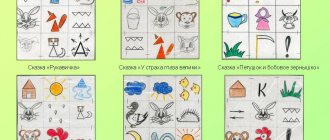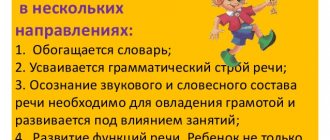Supporting children's initiative in project activities
Anfisa Matveeva
Supporting children's initiative in project activities
A preschool child is a tireless researcher who wants to know everything, understand everything, figure everything out, he has a unique, special vision of the world around him, he looks around at what is happening with delight and surprise and discovers a wonderful world, where there are many interesting objects and things, events and phenomena, so many secrets and unknowns.
The Federal State Educational Standards indicate that one of the main principles of preschool education is to support children's initiative in various activities .
The purpose of the work is to identify the features of project activities and the stages of its implementation in preschool educational institutions.
Indicators of the development of initiative and independence of an older preschooler are: the desire to solve problems of activity without help from other people, the ability to set a goal for an activity , carry out basic planning, implement what was planned and get a result adequate to the goal, as well as the ability to show initiative and creativity in solving emerging tasks. And the teacher faces an important task - to develop a comprehensive system model aimed at supporting children's initiative in project activities .
The most effective form of work to develop initiative and independence is the implementation of project activities of various types , namely the independent acquisition of knowledge when solving practical problems or problems that require the integration of knowledge from various subject areas.
initiative in children has been and remains the most pressing. And these are precisely the qualities that are the basis for the development of a person’s character. That is why in preschool age it is necessary to help the child reveal his “I”
, learn to express your opinion, take
initiative , and not act on the orders of adults.
Modern children live in the era of informatization and computerization. In a rapidly changing life, a person is required not only to possess knowledge, but also, first of all, to be able to obtain this knowledge himself, operate with it, and think independently. Initiative is manifested in all types of activities , but most clearly in communication, objective activity , play, and experimentation. This is the most important indicator of children's intelligence and its development. Initiative is an indispensable condition for improving all cognitive activities of a child , but especially creative ones.
An enterprising child strives to organize games, productive activities , meaningful communication, he knows how to find an activity that suits his own desires; join the conversation, offer an interesting activity to other children. In preschool age, initiative is associated with the manifestation of curiosity, an inquisitive mind, and ingenuity. An initiative child is distinguished by meaningful interests.
How to develop initiative ?
1. Give simple tasks (remove the Fear of “I can’t handle it”, develop initiative .
2. Give tasks that are interesting or those in which the child has a personal interest in doing something.
3. Support initiatives (be prepared to pay for mistakes and failures)
.
4. Learn to respond competently to your own mistakes.
One of the technologies that develop children's initiative , in my opinion, is project activity . Also N. E. Veraksa in the program “From birth to school”
recommends the active use of this technology in work, since the use of the
project in preschool education can significantly increase children’s independent activity, develop creative thinking, children’s ability to independently find information about an object or phenomenon of interest in different ways and use this knowledge to create new objects of reality.
Project activities involve the integration of educational areas, which makes it possible to consider any topic in a multifaceted and deeper way. The project , implemented according to the principles of the Federal State Educational Standard, assumes a partnership model. Thus, the teacher acts as a creator of conditions that provide choice, an adviser, an assistant, a friend.
Projects in preschool educational institutions are , as a rule, educational in nature. project from start to finish . Therefore, teaching the necessary skills and abilities is the main task of educators. It is important for the teacher to organize children's activities a way that the pupil exercises himself in the ability to observe, remember, compare, act, and achieve his goal. Something that is attractive, funny, interesting, arouses curiosity and is fairly easy to remember. We should not forget that the material with which the child did something himself is especially easy to remember and retains for a long time in memory: he felt, cut, built, composed, depicted. Children should gain experience in creative, exploratory activities , putting forward new ideas, updating previous knowledge when solving new problems.
To develop projects , we use a form of individualization of children's learning and development - children's advice . The children's council is a general meeting of a group of children together with teachers. Everyone gets the opportunity to talk about events in their lives, describe their experiences, share desires, and also receive new information from others. At the initiative of children and adults, we plan topics, upcoming classes, establish group rules, maintain a positive mood, conduct various kinds of games and exercises (speech, articulation, elements of psycho-gymnastics, joint singing, reading, etc.)
After several such children's councils, a certain algorithm for planning and conducting a children's council . Thus, many successful projects have come to life . For example, research - “Magic Salt”
,
“What is snow?”
,
“What a miracle are soap bubbles”
,
“My great-grandmother is our pride”
, creative ones - “The
Cuckoo Tale”
,
“The Great Patriotic War”
.
Let's look at the Children's Council planning algorithm on the topic
“Yakut folk song “Saadyaay ous”
.
Stages of planning Role of the teacher Questions that can be asked
I initiate a general discussion at the children's council so that the children find out what they already know about a certain subject or phenomenon. I act as a moderator, helping children discuss, negotiate, make choices and make decisions. What's your mood?
Who wants to ask a question right away?
Who wants to share news (impressions, ideas, doubts?
How can this news help us?
What made you happy (surprised, upset?
I involve children in actively putting forward ideas, discussing possible options for action and, ultimately, in choosing the topic of an educational project . I support children's initiative and creativity , demonstrate a partnership style of relationships, a positive emotional attitude, and anticipation of success based on the value of joint actions.
I help children make consistent choices on their own. Introduction to the topic of the project . Listening to folk songs. Song selection.
—Have you heard folk songs before?
- What is this song about?
-Let's decide together how to play this song.
-How would you perform this song?
-What is the mood of the song?
Making a plan I ask those who want to share their thoughts about what they know, want to know about the chosen topic, what they plan to do to find out. These statements become the basis of a plan of educational work developed jointly by children and adults.
I bring all the children’s ideas into the general plan along with the ideas of adults. What have you and I already managed to do (find out, what to learn?
What do you want to do?
What do you expect to do today?
What do you want to know, what do you want to learn?
Where do you start?
How long does it take to complete the entire plan?
Let's implement our plans. I briefly tell you what I offer them.
I plan my activities together with the children as a model .
I help children plan their activities , remembering that the child has the right to freely act, move, communicate, join and leave groups, play (I record the children’s choices)
.
Throughout the day I ask about results, successes and failures. Listening to a song. Learn a song, a melody. Learn to sing on your own. Choral performance. Proposals for implementation. At this stage, the children suggested introducing the image of a bull.
We hold a final council. We sum up the results and outline the prospects together with the children. I support children’s desire to share their achievements and failures.
My task is to make sure that every child experiences a feeling of deep satisfaction - his work is important and noted by everyone.
Who wants to talk about the work done?
What difficulties did you encounter?
What was the most interesting thing?
What did you manage to do today?
What was the easiest thing to do?
We believe that the children's council is the place , time, form where competencies and key competencies are most naturally formed and manifested.
Of course, the initiative and creativity of our children depends on the activity and creativity of our parents. They eagerly support all our projects and endeavors , sew costumes, prepare scenery, and do experiments with their children.
Conclusion: For me, the topic of creating conditions to support children's initiative is modern and relevant. Our future belongs to independent, proactive children .
Effective approaches to developing children's initiative through project activities
Analyzing the table, we can conclude that the lowest level of development of children’s initiative is in the cognitive - 27% and creative - 23% spheres of activity. A creative and educational project will be selected accordingly. We organized a creative and educational project “The coniferous forest was born.” A problematic situation - they brought us pine and spruce seedlings. “What should we do with the seedlings?” - searching for a solution to the problem. The children offered their options and discussed them. So, some children suggested planting seedlings in the forest, but this decision caused difficulties, the forest is far away. One child offered to plant it in his yard, but many felt sorry to part with the seedlings. The next suggestion was to draw the best home for pines and fir trees - a forest. We supported the children's initiative. The guys worked hard and produced wonderful drawings. We discussed their work. The children felt proud and satisfied that their ideas were realized. And this, in turn, inspires and liberates children, their speech becomes more confident and brighter. The problem was solved only on paper. And one child suggested planting seedlings in our kindergarten territory. We have a lot of free space and already have several tree seedlings. A solution has been found. We invited parents and together they planted seedlings on the territory of the kindergarten. At this stage, children’s research skills are developed: independent search for information, its processing and use in joint activities with peers.
The implementation of the final stage was carried out not only in a group room, excursions were also organized to our forest, planted by children and adults on the territory of the kindergarten. On these excursions, children publicly presented the product of project activities and communicated. They shared their impressions.
After the project, based on the results of diagnosing four areas of initiative in children of senior preschool age, we compiled a summary table
| Scope of initiative | Number of children in % | ||||||||||
| Level 1 (low) | Level 2 (intermediate) | Level 3 (high) | |||||||||
| was | became | was | became | was | became | ||||||
| communication initiative | 27% | 36% | 35% | 37% | 65% | ||||||
| creative initiative | 37% | 40% | 36% | 23% | 64% | ||||||
| initiative as goal setting and volitional effort | 27% | 32% | 40% | 45% | 60% | ||||||
| cognitive initiative - curiosity | 36% | 37% | 35% | 27% | 65% | ||||||
Analyzing the table, we can conclude that there is an increase in initiative in all areas of activity: in creative initiative there is a high level of 64%, an average level of 36%, in goal setting initiative 60% (high level), in the communication sphere initiative 65% (high level ) and 35% (average level), in the cognitive sphere initiative 65% (high level). Thus, the greatest increase in initiative occurred in the cognitive and communicative sphere. The results of control diagnostics indicate the growth of initiative in all areas of activity



